The rhythmic beat of shoes on pavement, the steady breath syncing with each stride, and the unparalleled feeling of freedom – there’s a certain magic to running. But what happens when that liberating journey is interrupted by a nagging pain in the hip? A discomfort that starts as a mere twinge but soon turns into a stubborn throbbing, casting a shadow over your beloved routine? If you’ve felt this sting, you’re not alone. Many avid runners and casual joggers alike have had their rhythm disrupted by unexpected hip pain while running. But the good news? With the right knowledge and actionable tips, you can not only understand this inconvenience but also take confident steps toward reclaiming your pain-free runs. Let’s dive in.
Contents
What Causes Pain in the Hip While Running?

Every step, every leap, every sprint – our hips play a pivotal role in our ability to move effortlessly. But, like any mechanical system, issues can arise, particularly when the same movement is repeated frequently or with incorrect form. If you’re experiencing hip pain while running, it’s essential to identify its root cause for effective treatment. Let’s explore some of the most common culprits:
Muscle Strains
These are perhaps the most common injuries among runners. The hip flexors, which help lift your knees during your stride, can become strained if they are overworked or not adequately warmed up.
Tendonitis
Tendons connect muscles to bones. Overuse or rapid increases in running intensity can inflame these tendons, especially the ones in the hip region, leading to pain and discomfort.
Bursitis
Bursae are small, fluid-filled sacs that reduce friction between bones and soft tissues. They can become inflamed due to repetitive motions, like the consistent strides in running, causing a condition known as bursitis. This inflammation can produce sharp pain, especially during movement.
Hip Labral Tears
The hip joint is a ball-and-socket joint. Around the socket, there’s a ring of cartilage called the labrum, which can tear due to a fall, repeated twisting movements, or sometimes even the wear and tear of regular running. This tear can cause a catching sensation in the hip joint, along with pain and stiffness.
Overuse Injuries
This is a blanket term that encompasses several injuries, from stress fractures to muscle fatigue. They usually stem from pushing oneself too hard without adequate rest or not giving the body enough time to heal and adapt.
Biomechanical Issues
Sometimes, the problem isn’t about how much you run but how you run. Issues with running form, foot pronation, or even leg length discrepancies can contribute to hip pain by creating imbalances and added strain on the hip joint.
Understanding the cause behind your hip pain is the first step towards effective intervention. Remember, every runner is unique, and what works for one person might not work for another. It’s crucial to listen to your body and seek professional advice if unsure.
How Do I Fix Hip Pain While Running? Stretches & Exercises
Whether you’re a seasoned marathoner or someone who enjoys casual jogs around the block, hip pain can be a disheartening hurdle. But fear not; with the right stretches and strengthening exercises, you can combat that discomfort and reclaim your stride. Below, we’ve outlined some effective exercises to integrate into your routine. (While we cannot provide diagrams here, consider collaborating with a fitness expert or therapist to visually illustrate these exercises for better understanding.)
Stretches to Alleviate Hip Pain
Hip Flexor Stretch
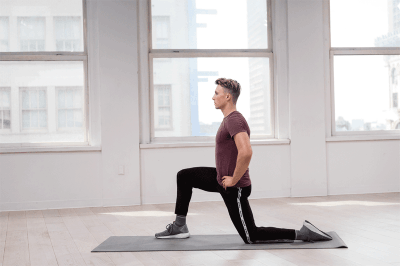
- Start by kneeling on the floor.
- Step forward with your right foot, creating a 90-degree angle at your knee.
- Push your hips forward until you feel a stretch in the front of your left hip.
- Hold for 20-30 seconds, then switch sides.
Piriformis Stretch
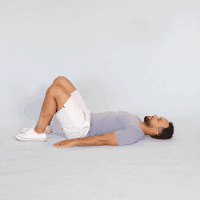
- Sit on the floor with both legs extended.
- Cross your right leg over your left, placing your right foot flat on the floor near your left knee.
- Gently pull your right knee towards your left shoulder.
- Hold for 20-30 seconds, then switch sides.
Seated Hip Rotation

- Sit with your legs extended in front of you.
- Bend your right knee, placing your right foot on the outside of your left knee.
- Twist your upper body to the right, using your left arm to push against your right knee.
- Hold for 20-30 seconds, then switch sides.
Strengthening Exercises for Hip Protection
Clamshells
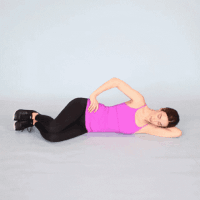
- Lie on your side with your hips and knees bent at 90 degrees, legs stacked.
- Keeping your feet together, lift your top knee as high as possible without moving your pelvis.
- Repeat for 12-15 reps on each side.
Bridge Exercise
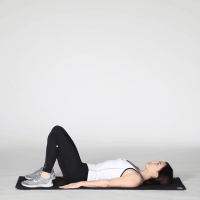
- Lie on your back with knees bent and feet flat on the ground.
- Tighten your core and lift your hips off the ground, pressing through your heels.
- Hold the top position for a few seconds, then lower.
- Repeat for 12-15 reps.
Hip Abduction
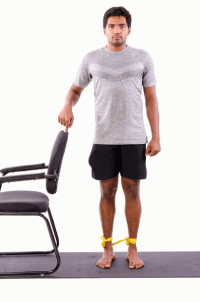
- Stand straight with a resistance band looped around your ankles.
- Tighten your core and lift your right leg to the side, keeping your toes pointing forward.
- Lower and repeat for 12-15 reps, then switch sides.
Consistency is key. By integrating these exercises into your routine, not only will you help alleviate current hip pain, but you’ll also fortify your hips against future incidents. If pain persists or if you’re unsure about your technique, always consult a physical therapist or trainer for guidance.
The Importance of Warming Up and Cooling Down
Never underestimate the power of a solid warm-up and cool-down. These rituals are not just a formality but vital steps in ensuring your body is ready for action and recovers appropriately post-workout. By gradually increasing your heart rate and circulation, a warm-up prepares your body for the physical activity to come. It enhances muscle elasticity, reducing the risk of strains and injuries.
Additionally, post-exercise, your muscles are warm and more pliable. A cool-down helps gradually decrease heart rate and aids in the removal of lactic acid, minimizing post-workout stiffness. Incorporating a dedicated warm-up and cool-down, specifically targeting the hips, can be the difference between a pain-free run and recurring hip discomfort. It’s a small investment of time for a significant return in comfort and injury prevention.
When to Seek Professional Help?
Hip pain, while common among runners and active individuals, shouldn’t be dismissed as a mere side effect of exercise. Persistent pain is your body’s way of signaling that something isn’t right, and it’s crucial to heed that warning.
Signs You Should Consult a Professional:
- Persistent Pain: If your hip pain lingers despite rest, self-care, and over-the-counter pain relievers, it’s time to get a professional opinion.
- Increased Intensity: A sharp increase in pain or discomfort that limits your mobility warrants immediate attention.
- Swelling or Bruising: Visible signs like swelling or discoloration can indicate more severe underlying issues.
- Pain at Night or During Rest: If the pain disturbs your sleep or appears when you’re not active, it’s a cause for concern.
Potential Benefits of Professional Treatments:
- Physical Therapy: Under the guidance of a trained physical therapist, you can learn tailored exercises and stretches to address your specific pain points, improve mobility, and prevent future injuries.
- Orthopedic Consultation: An orthopedic specialist can offer diagnostic tests like MRIs or X-rays to pinpoint the root cause of your pain, whether it’s a bone issue, a torn ligament, or something else.
- Medications and Injections: In some cases, prescription medications or therapeutic injections might be recommended to reduce inflammation and pain.
Ignoring persistent hip pain can lead to more serious complications, prolonged recovery, and can even sideline you from your favorite activities. Prioritize your well-being by consulting with healthcare professionals who can provide the expertise and guidance needed to get you back on track.
Tips To Prevent/Manage Pain
Hip pain can be a runner’s nemesis, but it doesn’t have to sideline you. By integrating some preventative measures and self-care strategies into your routine, you can keep pain at bay and ensure that your running journey remains smooth and enjoyable.
- Maintain a Healthy Weight: Carrying extra weight can put unnecessary strain on your hips. By staying within a healthy weight range, you reduce the stress on your joints, including the hips.
- Invest in Good Footwear: Your shoes play a pivotal role in how shock is absorbed and distributed throughout your body. Ensure you’re wearing shoes with appropriate support for your foot type and replace them regularly.
- Stay Hydrated: Muscles and joints function best when they’re well-hydrated. Ensure you’re drinking enough water, especially before, during, and after your run.
- Use Ice and Heat: After running, consider applying ice to any sore areas to reduce inflammation. If you have stiff or tense muscles, a warm bath or heating pad can help relax them.
- Anti-inflammatory Foods: Incorporate foods like berries, fatty fish, and turmeric into your diet. These have natural anti-inflammatory properties that can help combat and prevent pain.
By proactively integrating these tips into your routine, you can mitigate the risk of hip pain and ensure a more comfortable and fulfilling running experience.
Conclusion
Hip pain, especially during activities like running, can be frustrating and limiting. While the self-care measures and preventive strategies listed above can offer relief, it’s essential to remember that no one knows your body better than you. If the discomfort persists or you’re unsure about the cause of your hip pain, professional guidance can make all the difference. Physical therapy, particularly, can offer tailored solutions to address your unique needs and pain points.
If you’re experiencing Hip pain, physical therapy for hip pain at PhysioMantra can help: Book an online physical therapy session.



